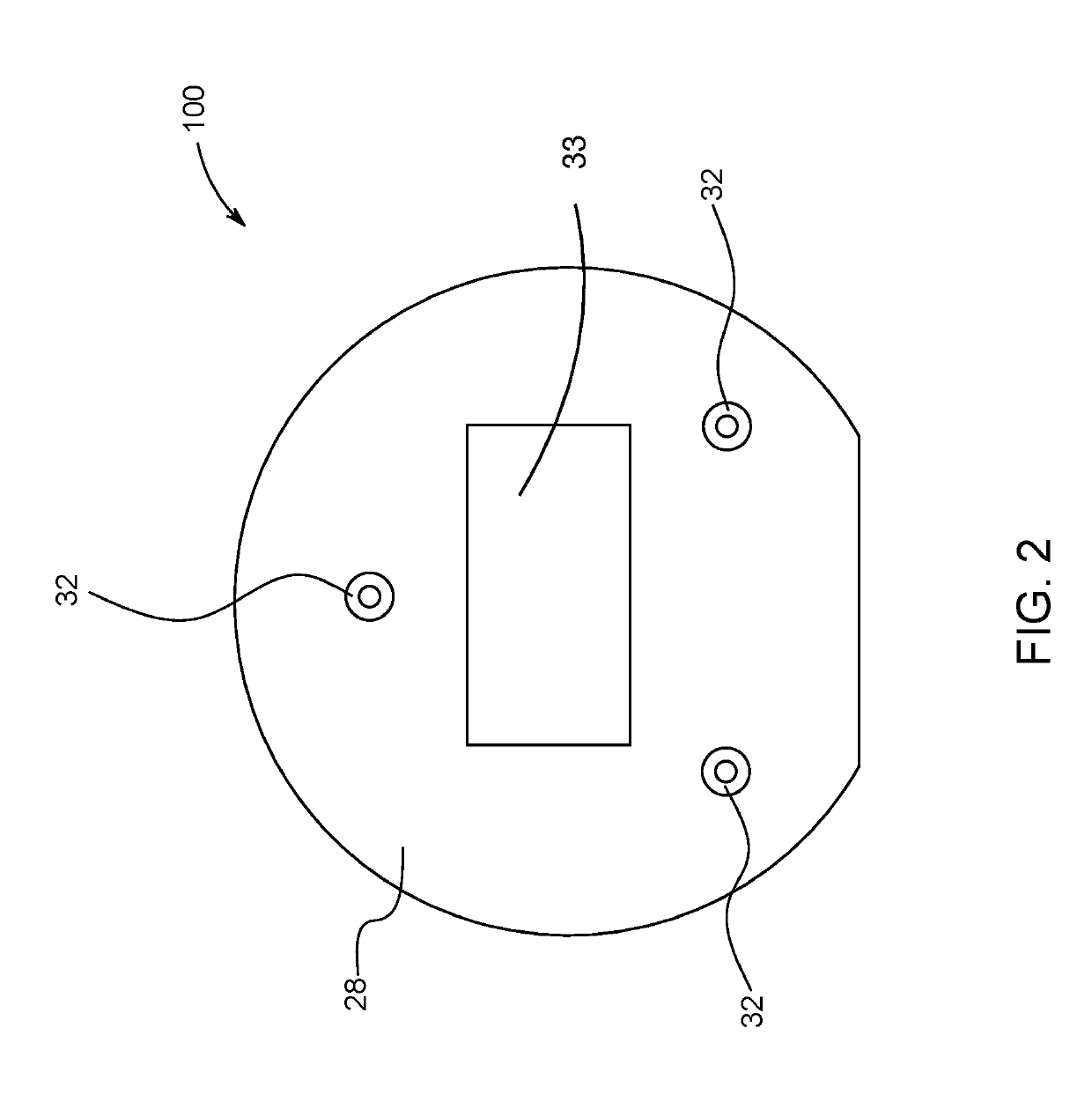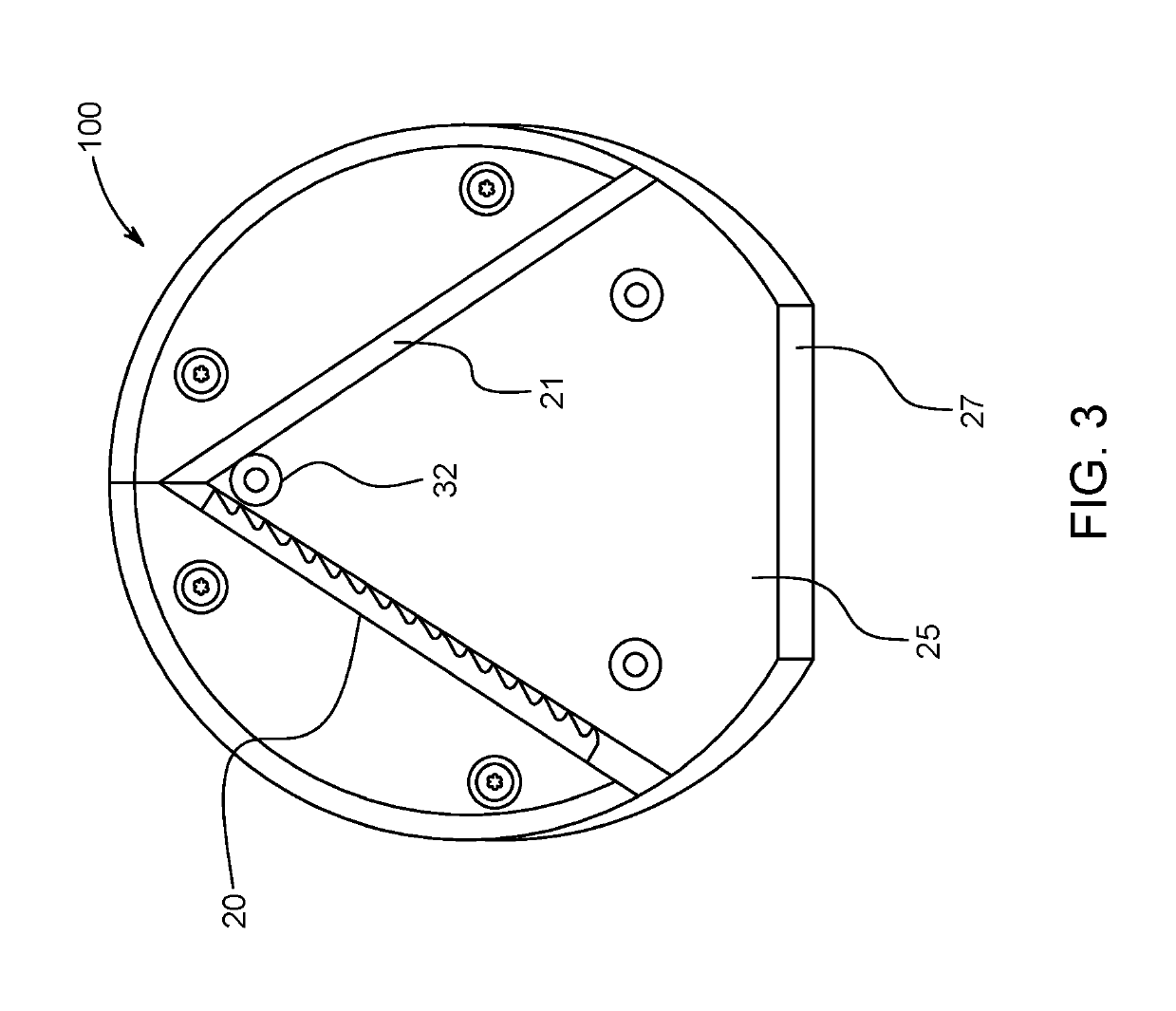Jar lid opener
- Summary
- Abstract
- Description
- Claims
- Application Information
AI Technical Summary
Benefits of technology
Problems solved by technology
Method used
Image
Examples
Embodiment Construction
[0009]The present invention provides a jar opener that is mountable on the undersurface of a cabinet or other flat surface that includes an opening to receive a lid of a jar. This opening is a V-shaped which is mounted on a semicircular base. The V-shape opening is created by using a first lid brace and a second lid brace that are attached to the base of the opener. A receiving opening is created to receive the lid and brace the lid against a blade. The blade is provided on the first lid brace and therefore secures the lid into a stationary position while an individual may turn the jar preferably using two hands to loosen the lid on the jar. The present invention includes openings in the base to mount the base onto the surface and screws are used to mount the respective braces in place onto the base of the jar lid opener.
[0010]A jar lid opener 100 according to present invention is depicted in FIGS. 1-5, where FIG. 1 shows a top view of the jar lid opener 100. In this top view, a fir...
PUM
 Login to View More
Login to View More Abstract
Description
Claims
Application Information
 Login to View More
Login to View More - R&D
- Intellectual Property
- Life Sciences
- Materials
- Tech Scout
- Unparalleled Data Quality
- Higher Quality Content
- 60% Fewer Hallucinations
Browse by: Latest US Patents, China's latest patents, Technical Efficacy Thesaurus, Application Domain, Technology Topic, Popular Technical Reports.
© 2025 PatSnap. All rights reserved.Legal|Privacy policy|Modern Slavery Act Transparency Statement|Sitemap|About US| Contact US: help@patsnap.com



